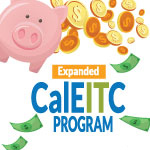Resources
California Child Wellbeing Coalition e-Guide
The California Child Wellbeing Coalition e-Guide (e-Guide) is a digital resource intended to support state and local public health programs, child-serving systems, non-profits, and philanthropic organizations that are interested in collaborating withorganized groups at the local-level who are working to achieve child wellbeing through policy, systems, and environmental (PSE) change. A well-functioning coalition can be a powerful way to effectively create community-wide PSE health change behaviors1, suchas working to reduce and prevent child maltreatment and Adverse Childhood Experiences (ACEs).
Best Practices Guidelines for California’s Child Abuse Prevention Councils
The Best Practices Guidelines for California’s Child Abuse Prevention Councils (CAPCs) are offered here to clarify and support their central role as the catalyst, convener and coordinator of the county-wide approach to prevention of child abuse. This manuscript has been informed by examples of excellence and innovation across the state. In this manuscript, you will find expanded definitions of the roles of CAPCs, the foundational capacity required to fulfill each role, and tools and resources that can be used to effectively strengthen the capacity of CAPCs. It is our hope that this Best Practices Guidelines manuscript will unify our collective prevention efforts by building common language and approaches.
Spread the word about the expanded Cal EITC program!
 Your friends, family, and those you serve may qualify for cash-back tax credits that can increase their refund when they file their taxes!
Your friends, family, and those you serve may qualify for cash-back tax credits that can increase their refund when they file their taxes!
The expanded CalEITC, along with the federal EITC, can result in hundreds or even thousands of extra dollars back into the pockets of California’s working families, college students, and seniors. Both credits may provide a refund or reduce the amount of taxes an individual may owe, and no minimum income is required to qualify. In addition, individuals may be eligible to receive free tax assistance.
For 2018 the maximum income amount has been raised for both CalEITC and federal EITC, meaning more Californians will be eligible for the tax credit!
For more detailed information about the programs visit www.CalEITC4Me.org
EITC Brochure
Connections Matter

Visit the
Connections Matter website to find out how to promote caring connections, healthy brains, supportive relationships and strong communities. Be sure to check out the new
resource booklet by Linda Chamberlain! Available in online and print formats.
Social Media Guide and Handout
This social media guide can be used to share some basic information about how to begin using social media and other forms of communication to promote your organization and its programs.
Myths vs. Facts about Child Welfare
There is often confusion about the services provided by Child Welfare Services. The OCAP wants to help dispel the rumors and share information letting families know that the top priority of the child welfare field is to protect children and families and provide them with the services they need to be happy and healthy. Share our Myths vs. Facts Poster to help get the word out!
Safe to Sleep
CDSS promotes the National Institute of Child Health and Human Development’s Safe to Sleep campaign to help share infant safe sleep messages with a variety of audiences, including healthcare and services, caregivers, and families, including fathers and grandparents. Resources are available in English and Spanish. Visit the NIH website to learn more and download materials.
Opioids and Pregnancy
*These materials were created by the California Department of Public Health.
Child Neglect in California: Risk Factors and Early Interventions
This study examines the major risk factors for child neglect, the most common type of child maltreatment in California.Data drawn from California’s Statewide Automated Child Welfare Information System and the Structured Decision-Making Database tracks substantiation outcomes for five years for families that were first referred to child welfare.
Trauma-Informed Nutrition
Trauma and adversity of any kind can disrupt the body and intensify an unhealthy relationship with food, leading to poor nutritional health. Trauma-Informed Nutrition recognizes the role that ACEs and other forms of adversity play in dietary habits. To learn more about the relationship between adversity, chronic disease, and nutritional health, download the Trauma-Informed Nutrition information sheet.